Off the coast of Qatar and Saudi Arabia, the archipelago nation of the Kingdom of Bahrain comprises more than thirty small islands surrounding Al Bahrayn, the main island.
The Middle Eastern nation is 266 km2, with the main island making up 83% of that total. It has a 161-kilometer coastline facing the Gulf of Bahrain.
Before 2014, Bahrain was divided into twelve municipalities:
- Al Hadd
- Al Manamah
- Al Mintaqah al Gharbiyah
- Al Mintaqah al Wusta
- Al Mintaqah al Shamaliyah
- Al Muharraq
- Ar Rifa’ wa al Mintaqah al Janubiyah
- Jidd Haffs
- Madinat Hamad
- Madinat ‘Isa
- Juzur Hawar
- Sitrah
Today, the largest administrative unit is the governorate, each with a Governor chosen by the Prime Minister.
Bahrain Governorates
If you’re wondering how many governorates are in Bahrain, this is the map for you!
After removing the Central Governorate in 2014, there are now four Governorates in Bahrain. These include the Capital Governorate, Muharraq Governorate, Northern Governorate, and Southern Governorate.
This article will give some general information about Bahrain provinces, such as population and area, as well as information on local attractions, languages, and industries.
Below, you can see the map of Bahrain governorates:
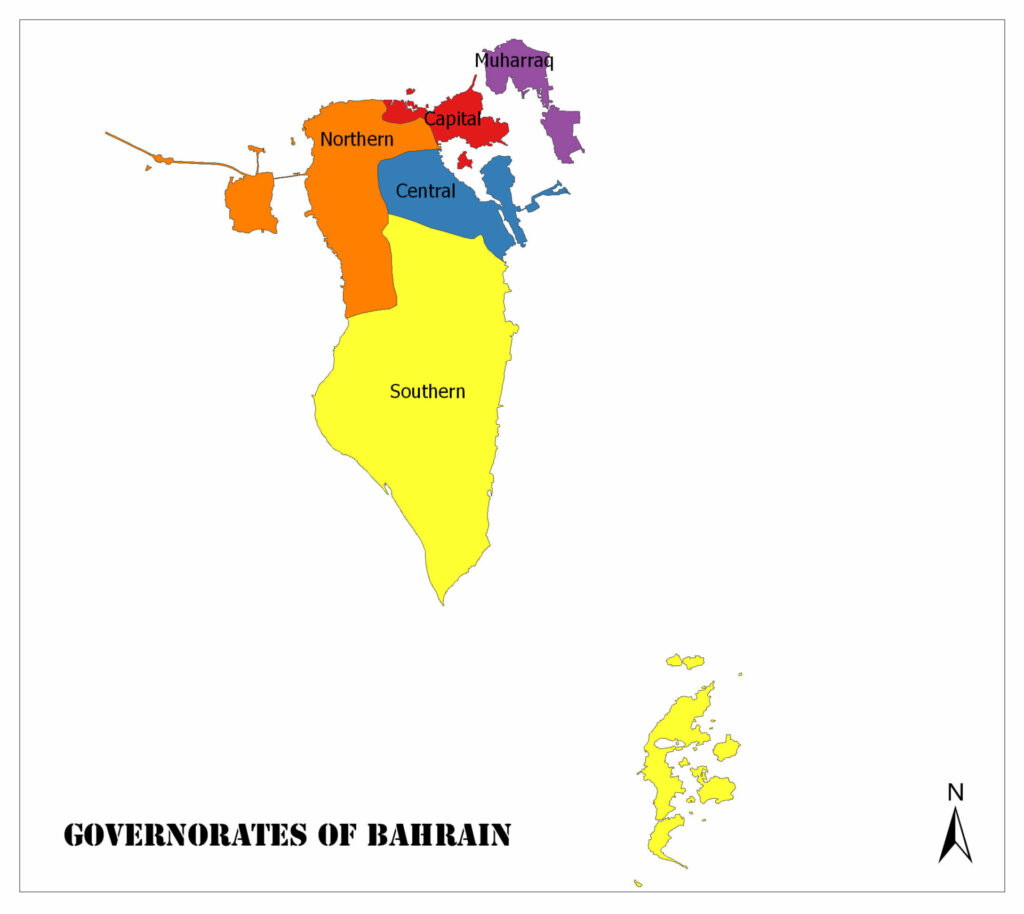
The Capital Governorate
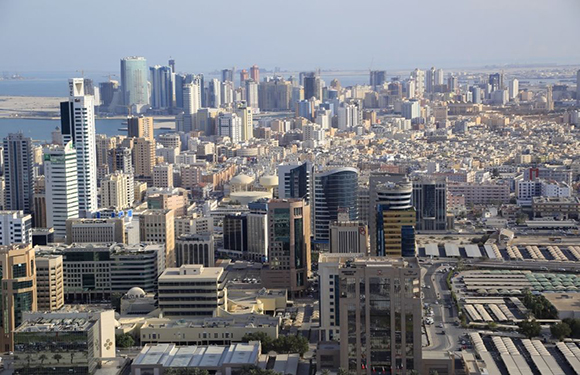
The Capital Governorate was the first to be officially established on July 3, 2002. It includes the capital city, Manama, and is the most populated administrative unit in the country.
In 2020, the population was 534,939. With a total area of only 90.25 km2, the population density is very high, totaling 5,927 residents per km2.
The governor, Shaikh Hisham bin Abdulrahman bin Mohammed Al Khalifa, has been in his role since 2011.
The Capital has several tourist destinations, including the Bait al Quran, Al Khamis Mosque, Bahrain National Theatre, Al Fateh Mosque, Bab al Bahrain, Block 338, Qalat al Bahrain, and Bahrain National Museum.
This governorate of Bahrain consists of the municipalities of Jid Ali, Ras Rumman, Al Manamah, and sections of Jidd Haffs.
Muharraq Governorate
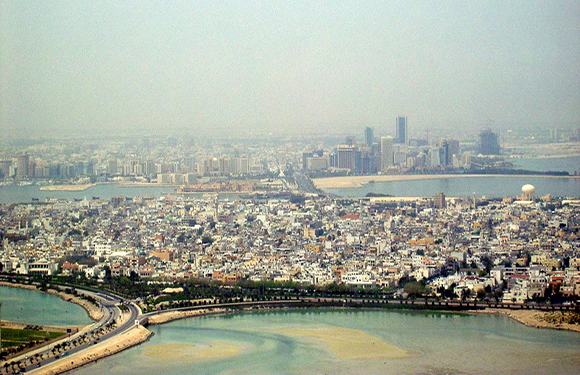
Muharraq is the second largest of the Bahrain governorates with 200,000 residents and 72.05 km2, and the second-largest island in the Bahrain archipelago.
Towns and settlements on the island include Al Murrahaw, Al Dair, Arad, Busaiteen, Hidd, Galili, Halat Bu Maher, and Samaheej.
However, Muharraq is continuing to expand.
They recently reclaimed Amwaj Islands, an artificial landmass. The intention is to build oceanfront property, and in 2016, the governorate completed infrastructure, electricity, roads, water access, telecommunications, and access to the sewers.
Northern Governorate
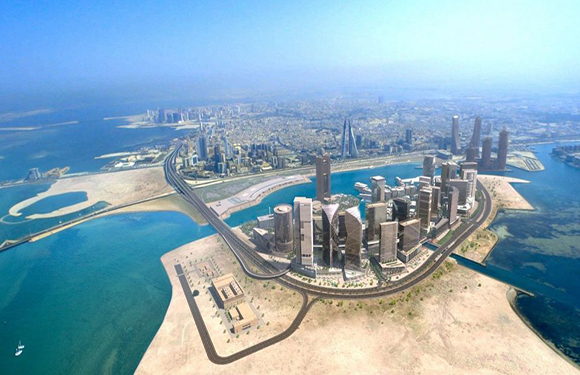
In the northwest is the Northern Governorate, with an area of 145.50 km2 and a population of 276,949.
It encompasses several municipalities, including Madinat Hama, Jid Haffs, Al Mintaqah, al Gharbiyah, Al Mintaqah al Shamaliyah, and Al Mintaqah al Wusta.
Settlements in the Northern Government consist of Budaiya, Jasra, Boori, Hamala, Dumistan, Karzakan, Malikiya, Sadad, Shahraken, Dar Kulaib, Umm an Nasan, Umm as Sabaan, Jidda Island, Northern City, Saar, Al Markh, Janabiya, Diraz, Bani Jamra, Qurayya, Abu Saiba, Shakhura, Jid Al-Haj, Jannusan, Muqaba, Barbar, Khamis, Jidhads, Al Musalla, Tashan, Abu Bhama, North Sehla, South Sehla, Buquwa, Al Qala, Hillat Abdul Saleh, Meqsha, Al Qadam, Al Hajar, and Karrana.
Southern Governorate
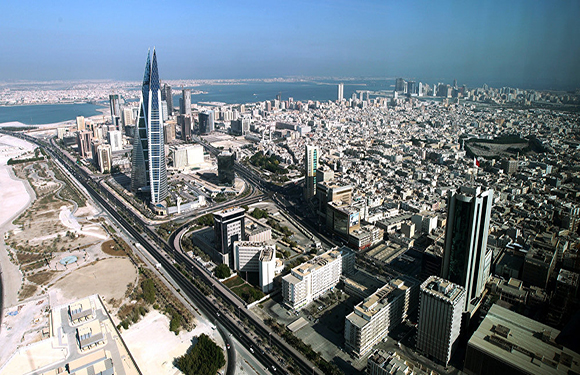
The Southern Governorate of Bahrain has the largest area, with almost 275% more land than the second largest.
It also has the smallest population, with 101,456 residents living in the area.
Municipalities that became part of the Southern Governorate include Awari, Zallaq, Isa Town, Ar Rifa’wa al Mintaqah al Janubiyah, Al Mintaqah al Gharbiyah, and the Hawar Islands.
Political System
The Kingdom of Bahrain is ruled under a constitutional monarchy. King Hamad bin Isa Al Khalifa is responsible for appointing all government officials.
Under the king is the Prime Minister. There have only been two Prime Ministers since 1970 when Bahrain gained its independence from Iran.
The first, Sheikh Khalifa bin Salman Al Khalifa, was the uncle of the current king. He died in office after holding his position for 50 years.
The current Prime Minister, Salman bin Hamad Al Khalifa, took office on November 11, 2020. He is the Crown Prince and eldest son of King Hamad bin Isa Al Khalifa.
Bahrain has a bi-cameral legislative group comprised of the citizen-elected Council of Representatives and the king-appointed Consultive, or Shura, Council.
Every four years, Bahrain holds elections to determine the Council of Representatives members.
Geography
Bahrain is in the Persian Gulf, only 15 miles off the coast of Saudi Arabia. The total area of the kingdom is 694 km2.
The seabed surrounding the archipelago consists of coral reefs, while the island is mostly desert, limestone hills, and barren sand plains.
There is a single fertile strip on the northern coast, so many fruit and nut trees are grown there.
Qatar and Bahrain are currently in a dispute over ownership of the Hawar Islands.
Climate
Across all governorates of Bahrain, the climate is arid. Summer temperatures can stretch into the triple digits, and southwestern winds, called Qaws, bring sand clouds.
The winter is much cooler but incredibly humid, thanks to a damp, northeastern air mass called the “Shamal.”
The average rainfall in the kingdom only reaches 70 millimeters, or 2.8 inches (ca. 7 cm), per year.
Language
The official language of Bahrain is Arabic, with two distinct dialects: Baharna Arabic and Bahraini Arabic. Other languages include Persian, English, Hindi, and Malayalam.
Economy
Much of the economy of Bahrain relies on the production, processing, and resale of crude oil and natural gas.
Despite being under the “Developing/Emerging” status under the World Bank guidelines, the Bahraini Dinar has the second-highest value of any global currency.
UNESCO World Heritage Sites
There are currently three UNESCO World Heritage Sites in the Bahrain governorates:
- Dilmun Burial Mounds, located in the Capital, Northern, and Southern Governorates.
- Qal’at al-Bahrain– Ancient Harbour and Capital of Dilmun, located in the Capital Governorate.
- Pearling, Testimony of an Island Economy, located in the Muharraq Governorate.
There are an additional six sites on the “Tentative List:”
- Hamad Town Tumuli Mound Field
- Barbar Temple
- Saar Heritage Park
- Hawar Islands Reserve
- Manama, City of Trade, Multiculturalism, and Religious Coexistence
- Awali oil settlement